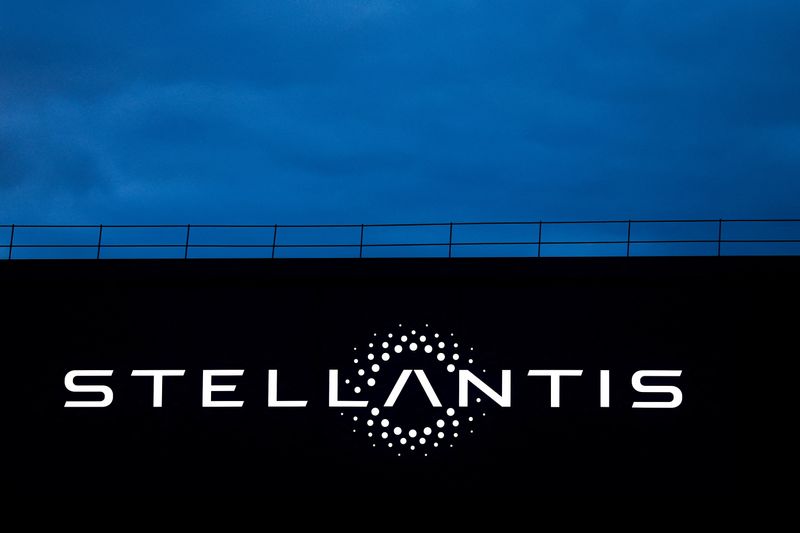
© Reuters. FILE PHOTO: The logo of Stellantis is seen on a company’s building in Velizy-Villacoublay near Paris, France, February 23, 2022. REUTERS/Gonzalo Fuentes/
By David Shepardson
WASHINGTON (Reuters) – Chrysler-parent Stellantis and General Motors (NYSE:) paid a total of $363 million in civil penalties for failing to meet U.S. fuel economy requirements for prior model years, documents seen on Friday by Reuters show.
The record-setting penalties include $235.5 million for Stellantis for the 2018 and 2019 model years and $128.2 million for GM covering 2016 and 2017, according to the National Highway Traffic Safety Administration (NHTSA), which administers the Corporate Average Fuel Economy (CAFE) program.
Stellantis said the penalty “reflects past performance recorded before the formation of Stellantis, and is not indicative of the Company’s direction.” Stellantis previously paid a total of $156.6 million in penalties for the 2016 and 2017 model years.
GM, which did not immediately comment, had not previously paid a fine in the 40-year history of the CAFE program. It had initially planned to use credits to meet its compliance shortfall but opted to pay penalties, NHTSA said.
The GM and Stellantis penalties were paid between December and May, according to the records. This is the first time in three years the agency has collected fuel economy penalties.
NHTSA in April 2022 said it calculated there would be 11 instances between 2018 and 2021 “where substantial civil penalty payments will have to be made” but did not disclose automakers involved.
The disclosure comes ahead of NHTSA’s plan to soon propose more stringent fuel economy standards for 2027 and beyond, after the Environmental Protection Agency in April proposed a 56% reduction in projected fleet average emissions over 2026 requirements by 2032.
In March 2022, NHTSA reinstated a sharp increase in penalties for automakers whose vehicles do not meet fuel efficiency requirements for 2019 and beyond.
For the 2019 to 2021 model years, the fine is $14, up from $5.50, for every 0.1 mile per gallon new vehicles fall short of required fuel-economy standards, multiplied by the number of non-complying vehicles sold. For the 2022 model year, the figure rose to $15.
Automakers protested the penalty hike in 2016, warning it could raise industry costs by at least $1 billion annually, including boosting the value of compliance credits sold by Tesla (NASDAQ:) and others.
Automakers whose vehicles achieve higher fuel economy than required can sell credits to automakers that do not meet CAFE rules.
Stellantis said it had made an incremental provision of 660 million euros ($709 million) as a result of the NHTSA penalty hike.
In April 2022, NHTSA sharply boosted fuel economy standards, reversing former President Donald Trump’s rollback of U.S. regulations aimed at improving gas mileage. NHTSA boosted fuel efficiency requirements by 8% for both the 2024 and 2025 model years and 10% in 2026.


